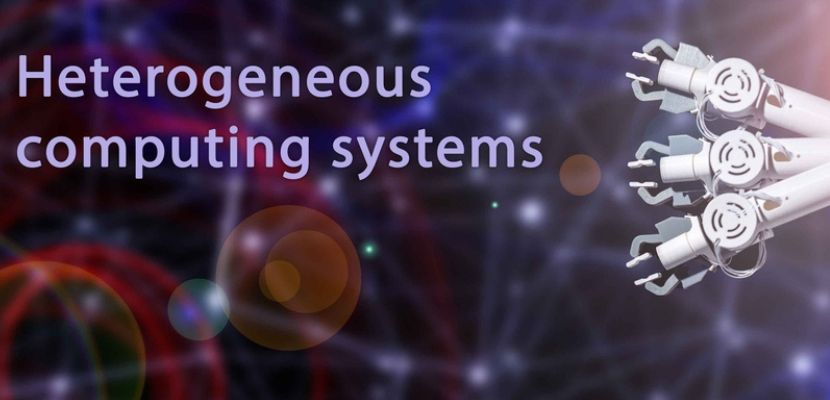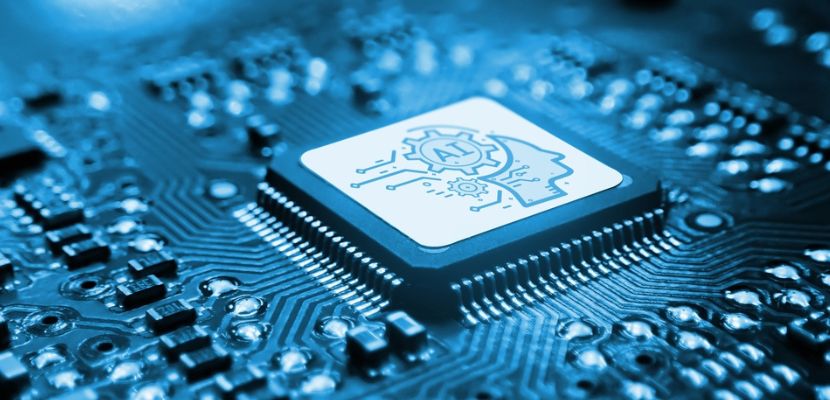Heterogeneous computing refers to a computing environment where various types of processors and computing units, such as CPUs, GPUs, FPGAs, and specialized accelerators, work together to perform different tasks. The goal is to leverage the unique strengths of each type of processor to optimize performance, energy efficiency, and cost-effectiveness.

What Is Heterogeneous Computing?
Heterogeneous computing is a paradigm in computer architecture that integrates multiple types of processors and computing units within a single system to achieve optimized performance and efficiency. In such an environment, various processors, such as CPUs and GPUs, field-programmable gate arrays (FPGAs), and other specialized accelerators, collaborate to execute diverse computational tasks.
The essence of heterogeneous computing lies in its ability to distribute workloads according to the strengths of each processor type. Each type of processor excels in handling specific kinds of operations—CPUs are well-suited for sequential tasks, GPUs for parallel processing, and FPGAs for customizable and high-throughput tasks. This distribution allows for improved performance, as tasks are processed more quickly and efficiently by the most appropriate hardware. Moreover, it enhances energy efficiency by reducing the computational load on less suitable processors, thereby lowering power consumption.
Heterogeneous System Architecture
Heterogeneous System Architecture (HSA) aims to provide a unified platform where diverse processing units can communicate and cooperate efficiently, thereby improving overall system performance, power efficiency, and programmability.
HSA addresses several key challenges in traditional heterogeneous systems, such as memory coherence, programming complexity, and efficient data sharing. One of the central concepts of HSA is the use of a shared memory model, which allows different processors to access the same memory space without the need for explicit data copying. This shared memory model simplifies programming and enhances performance by reducing the overhead associated with data transfer between processors.
In HSA, all processors are treated as first-class computing elements, each capable of directly accessing system memory and communicating with other processors through a high-speed interconnect. This approach eliminates the traditional bottleneck of having to route all data through the CPU, enabling more efficient parallel processing and faster execution of tasks, which are offloaded to specialized processors like GPUs or FPGAs.
HSA also introduces a standardized set of APIs and programming tools that abstract the complexities of heterogeneous computing. This standardization enables developers to write applications that take full advantage of the diverse processing capabilities of HSA-compliant hardware without deep knowledge of the underlying hardware details.
By providing a common framework for heterogeneous computing, HSA aims to accelerate the development of high-performance, energy-efficient applications across various domains, including graphics processing, scientific computing, machine learning, and more.
Heterogeneous Computing Practical Applications

Heterogeneous computing has a wide range of practical applications across various fields, leveraging the strengths of different types of processors to optimize performance, efficiency, and capabilities. Here are some notable applications:
1. Scientific Computing
Heterogeneous computing is extensively used in scientific research to perform complex simulations and data analyses. Tasks like climate modeling, astrophysics simulations, and computational chemistry benefit from the parallel processing power of GPUs combined with the sequential processing capabilities of CPUs, leading to faster and more accurate results.
2. Machine Learning and AI
Machine learning and artificial intelligence (AI) applications often require extensive computational resources for training and inference tasks. GPUs are particularly well-suited for these workloads due to their ability to perform parallel computations on large datasets. Heterogeneous systems accelerate the training of deep learning models and enhance the performance of AI applications.
3. Multimedia Processing
Heterogeneous computing is crucial in multimedia applications, such as video encoding and decoding, image processing, and real-time rendering. GPUs handle the intensive parallel processing required for these tasks, delivering smoother video playback, faster image processing, and more realistic graphics in games and virtual reality environments.
4. Financial Modeling
In the finance sector, heterogeneous computing is used for high-frequency trading, risk assessment, and complex financial simulations. The combination of CPUs for decision-making algorithms and GPUs for parallel data processing allows for faster and more efficient computations, leading to quicker insights and better decision-making.
5. Healthcare and Bioinformatics
Heterogeneous computing aids in medical imaging, genomic analysis, and bioinformatics research. GPUs accelerate the processing of large medical datasets, enabling faster and more accurate diagnostics, personalized medicine, and advanced research in understanding diseases and developing treatments.
6. Autonomous Vehicles
Autonomous vehicles rely on heterogeneous computing for real-time processing of sensor data, image recognition, and decision-making. GPUs process vast amounts of data from cameras, lidar, and radar sensors, while CPUs manage control algorithms and communication with other vehicle systems, ensuring safe and efficient autonomous driving.
7. Cryptocurrency Mining
Cryptocurrency mining involves solving complex cryptographic problems, which can be highly parallelizable. GPUs and specialized accelerators like ASICs (application-specific integrated circuits) are used in heterogeneous systems to speed up the computation process and maximize mining efficiency and profitability.
8. Internet of Things (IoT)
Heterogeneous computing supports the diverse processing needs of IoT devices, which range from simple sensors to complex edge computing nodes. By distributing tasks between low-power CPUs and specialized accelerators, heterogeneous systems enable efficient data processing, real-time analytics, and reduced latency in IoT applications.
9. Telecommunications
In telecommunications, heterogeneous computing enhances network performance by efficiently managing data traffic, processing signals, and performing real-time analytics. This leads to improved network reliability, faster data transmission, and better user experiences in applications like 5G networks and mobile services.
10. Augmented Reality (AR) and Virtual Reality (VR)
AR and VR applications demand high-performance computing to render immersive environments in real time. Heterogeneous systems utilize GPUs for rendering complex graphics and CPUs for managing interactions and physics simulations, delivering seamless and responsive AR/VR experiences.
Heterogeneous Computing and AI and Machine Learning
Heterogeneous computing plays a pivotal role in advancing AI and machine learning by integrating different types of AI processors and specialized accelerators, to optimize computational tasks.
In AI and machine learning, tasks often involve processing large datasets and performing complex mathematical operations, which can be computationally intensive. GPUs are particularly well-suited for these workloads due to their ability to execute many parallel operations simultaneously, accelerating tasks like training deep neural networks. By combining the parallel processing power of GPUs with the sequential processing capabilities of CPUs, heterogeneous computing enables faster model training and more efficient execution of AI algorithms.
In addition to speeding up computation, heterogeneous computing enhances the flexibility and scalability of AI and machine learning applications. Specialized accelerators like TPUs (Tensor Processing Units) and FPGAs (field-programmable gate arrays) are employed to further optimize specific tasks, such as inferencing and real-time data processing.
This multi-processor approach allows for efficient allocation of resources, ensuring that each type of processor is used to its full potential. As a result, heterogeneous computing not only boosts performance but also reduces energy consumption and operational costs, making it a critical component in the deployment of robust and scalable AI and machine learning systems.
Heterogeneous Computing Advantages and Disadvantages
Heterogeneous computing offers a balanced approach to computational tasks by leveraging the strengths of various types of processors within a single system. This integration provides numerous advantages, such as enhanced performance, energy efficiency, and versatility in handling diverse workloads. However, it also introduces certain challenges, including increased complexity in programming and potential issues with compatibility and resource management.
Advantages
Heterogeneous computing leverages the unique strengths of different types of processors to deliver a range of benefits, making it a powerful approach for handling diverse and demanding computational tasks. Here are some of the key advantages:
- Enhanced performance. Heterogeneous systems improve overall performance by assigning tasks to the most suitable processors. CPUs handle sequential tasks efficiently, while GPUs and other accelerators manage parallel processing, resulting in faster execution of complex workloads.
- Energy efficiency. Heterogeneous computing reduces energy consumption by optimizing task allocation. GPUs and specialized accelerators are more energy-efficient for certain tasks than general-purpose CPUs, leading to lower power usage and operational costs.
- Versatility. Heterogeneous computing systems adapt to a wide variety of applications, from scientific computing to multimedia processing. This versatility ensures that the best-suited processor handles each task, enhancing system flexibility and application performance.
- Scalability. Heterogeneous architectures easily scale by adding more processors or accelerators, enabling them to handle increasing computational demands. This scalability is crucial for applications that require high performance, such as AI and machine learning.
- Improved resource utilization. By distributing workloads according to the strengths of different processors, heterogeneous computing ensures optimal use of available resources. This distribution maximizes system efficiency and prevents bottlenecks.
- Cost-effectiveness. Optimizing resource allocation enhances performance and reduces costs associated with energy consumption and hardware requirements. Heterogeneous systems can achieve higher performance without the need for expensive, high-end hardware components.
- Futureproofing. Heterogeneous computing systems can more easily incorporate new types of processors and accelerators as technology evolves. This adaptability ensures that the system remains relevant and capable of leveraging the latest advancements in computing technology.
Disadvantages
While heterogeneous computing brings significant benefits by leveraging the strengths of different types of processors, it also introduces several challenges and drawbacks. These disadvantages must be carefully considered to fully understand the implications and complexities involved in implementing heterogeneous computing systems:
- Programming complexity. Programmers need to be familiar with different programming models and languages to effectively utilize various processors, such as CUDA for GPUs or OpenCL for cross-platform support. This complexity increases development time and requires specialized knowledge.
- Resource management. Coordinating the use of CPUs, GPUs, and other accelerators requires sophisticated scheduling and load balancing techniques. Poor resource management leads to suboptimal performance and inefficient use of computational power.
- Data transfer overhead. The time and energy required to move data between CPUs and GPUs, can negate the performance gains achieved through parallel processing, especially if the data transfer is frequent or involves large volumes of data.
- Compatibility issues. Different processors may have unique requirements and constraints, leading to potential integration issues. Maintaining compatibility across updates and new hardware releases further complicates system design and maintenance.
- Debugging and optimization. Identifying performance bottlenecks and ensuring efficient execution across multiple types of processors require advanced tools and techniques, adding to the overall complexity of system development and maintenance.
- Cost. The need for diverse hardware components, specialized software, and skilled personnel to manage the system can lead to higher initial and operational costs, potentially limiting the accessibility for smaller organizations or individual developers.